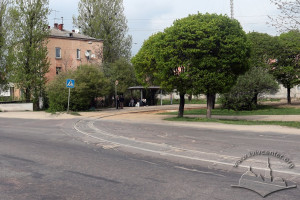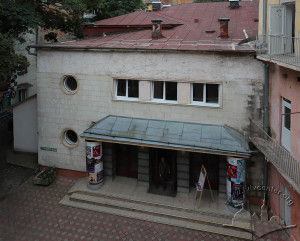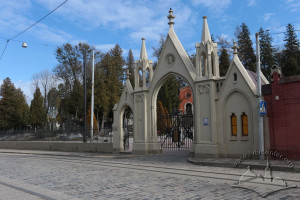Bohdan Koch ID: 261
Bohdan Koch ID: 261
26.04.1925-3.12.1996
One of the leading actors of the Maria Zankovetska Theater, film actor; during the Nazi occupation he was a prisoner of the Yanivsky concentration camp; in the postwar years he was sentenced for anti-Soviet propaganda.
Bohdan Kokh was born in the town of Ostrolęka, Bialystok voivodeship, in the family of Anatoliy and Varvara Kokh. In 1929, together with his family, he moved to Lutsk, where his father was offered a job as a land surveyor. He studied at the Lutsk Ukrainian Gymnasium. In 1939-1941 he graduated from the 7-grade school. Simultaneously from 1939-1940 he studied at a musical school.
In September 1941 he began to attend a high school, which, however, was closed by the occupation authorities within a month. At the same time, he performed as a singer and dancer at the choir of Vsevolod Volonsevych. In December 1941, he was accepted as a dancer to the ballet group of the Lutsk Drama Theater. With this group Bohdan Kokh performed in Rivne, Kovel, Volodymyr-Volynsky, Dubno. In April-August 1942 he studied at the so-called matura courses in Rivne; after finishing the courses it was possible to receive a matriculation certificate.
On 16 July 1943 his father and he were arrested by the SD along with about 200 other hostages in connection with a murder of a Nazi functionary. For two and a half months Kokh was detained in a prison in Rivne, where 30-40 prisoners were shot every Wednesday. After that, he was sent to a transit point in Lviv, from where people were transported to places of forced labour. He managed to escape. However, on the following day he was detained near the Halytsky market and sent to the Janowska camp.
"It was there that I was, so to speak, stripped of my surname and, in general, of everything. I got a badge, a Ukrainian badge — a triangle... We had blue triangles here in front and on the back ... And I was a personality no more, absolutely," he told about his experience in the 1990s.
His first task in the camp was to fill up a pit with bodies of dead prisoners. Among other things, Kokh witnessed the massacre of Jewish prisoners in the Yanivsky camp in November 1943. He was among those who were forced to load the bodies of those executed onto trucks. Soon he escaped and found a job as a dancer at the Opera House in Lviv. In March 1944 he went to Przemysl, where he continued to work at the local drama theater. In May 1945 Bohdan Kokh returned to Lviv and entered the Lviv State Conservatory (Chaykovskoho street 7). Simultaneously he worked at the Maxim Gorky Young Spectator's Theater. Everywhere he was considered a capable and ambitious person. For example, a reference signed by the director of the Young Spectator's Theater stated: "During his time in the theater, Comrade Kokh was a disciplined worker. All his time was dedicated to the theater, he was engaged in every theatrical production and performed the duties of the theater's ballet master. Apart from that, he organized a ballet concert group and patronized as a director in sick quarters and military units of the Red Army."
However, on 25 May 1946, he was arrested by the MGB (that is, Ministry for State Security). On 27 August of the same year Bohdan Kokh was sentenced, under the article 54-10 ("anti-Soviet propaganda and agitation") of the Criminal Code of the UkrSSR, to 7 years of imprisonment in correctional labour camps and to 5 years of deprivation of political rights. The first half-year he was kept in Lviv in the transit prison No. 25 and in the industrial labour colony No. 10, which was established at the prison and located on the site of the former Janowska camp. He was then sent to the tree felling camps in the Kemerovo region of the RSFSR; later he worked at a shoemaker's workshop and, for the last three and a half years, he was the head of a brigade of artists, formed of prisoners.
After his release on 26 May 1953, he worked at the Tomsk Regional Philharmonic. Subsequently, he returned to Lviv (Ivana Franka street 79, apt. 1) and from March 1954 worked at the Lviv State Ukrainian Maria Zankovetska Drama Theater. Here he became one of the leading actors. From 1955 he was also the head of the amateur choir of the Lviv Zoo Veterinary Institute (Mayakovskoho street 67). In 1961 he graduated from the Kyiv Conservatory. In addition to theatrical performances, he also played in the following films: "Master" (1979) and "For the Family Hearth" (1992), television series "The State Border" (1987), "A Crime with Many Unknown [Quantities]" (1993) and "... A Time to Collect Stones"(1993-1996). In 1991 he was awarded the title of Honoured Artist of Ukraine. Bohdan Kokh wrote memoirs entitled "The Meaning of Life". He is buried at the Lychakivsky cemetery.
Related buildings and spaces
Sources
- Архів управління Служби безпеки України у Волинській області, 5/6672-ФП — Архівно-кримінальна справа по звинуваченню Анатолія Олександровича та Богдана Анатолійовича Кохів, 1947-1995 рр.;
- Архів Центру досліджень визвольного руху (не впорядковано) — Аудіозапис спогадів Богдана Анатолійовича Коха, здійснений співробітниками Львівського обласного товариства "Меморіал" в 1990-х рр.





